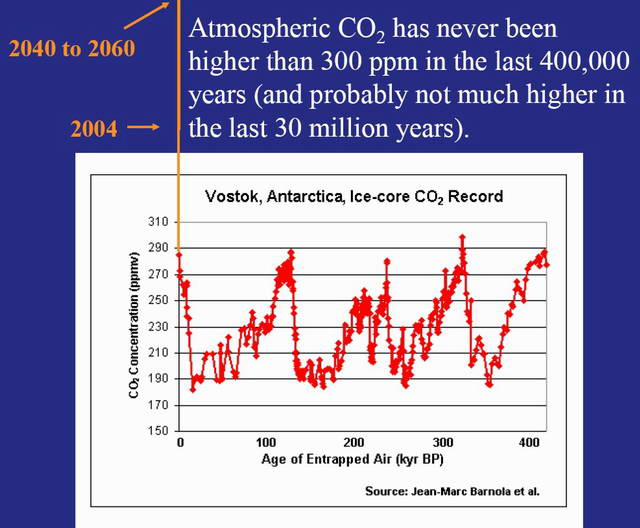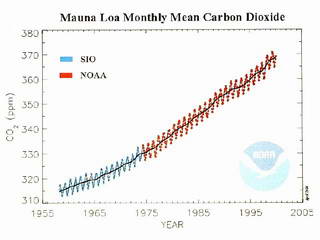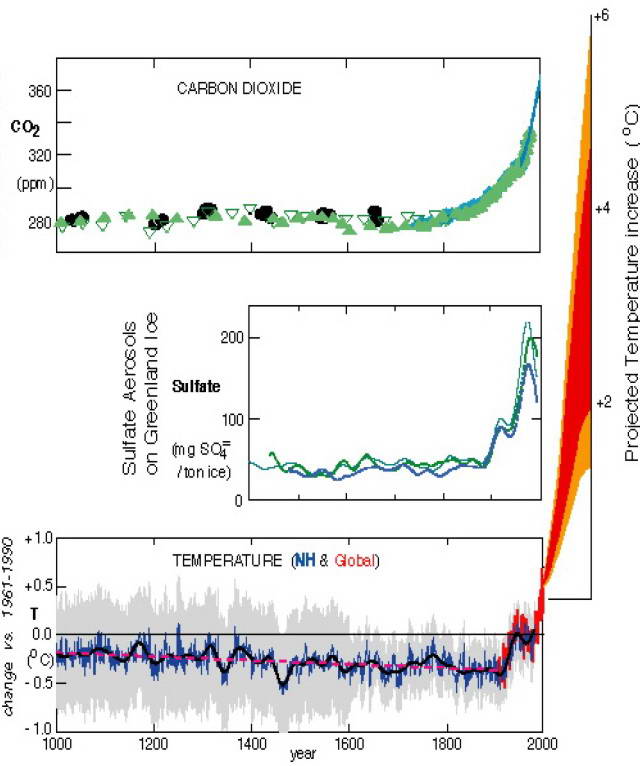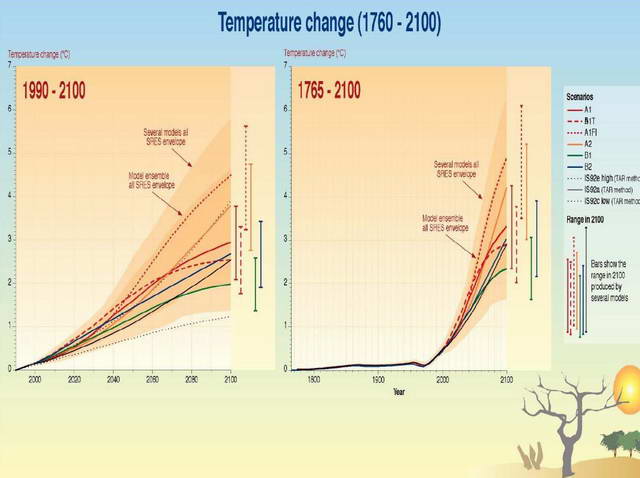|
|
Blogroll
|
|
Most recent articles |
|
Highlights |
|
States and Economies |
|
World economies: 15 of 50 largest economies are U.S. States: |
|
World States – Table 1 |
|
History and Society |
|
Fourth of July aboard the W.W. II aircraft carrier the U.S.S. Hornet |
|
A. L. Kroeber's The Civilization of California's Far Northwest |
|
The Arab Admiralty – and an Arab naval view of the Crusades |
|
Excerpt from “The Wife of Bath's Prologue” by Geoffrey Chaucer |
|
“Horsey” Vikings: exploring origin of the “Rohirrim” in The Lord of the Rings
|
|
The Battle of Crécy by Winston S. Churchill |
|
Monotheistic Paganism, or just what was it Christianity fought and faced? |
|
Medieval constipation advice for travelers: “A ripe turd is an unbearable burden” |
|
Alexis de Tocqueville's bicentennial: Anticipatory censorship in colonial America |
|
Antiquity vs. Modernity: Alexis de Tocqueville on the mind of the slaveholder vs. soul of America |
|
Federalism, and Alexis de Tocqueville on the origins of American democracy |
|
Science, Technology, Space |
|
Looking in the right direction – towards the future – with regard to global warming |
|
Know Your Neighborhood: from Andromeda to Fermions and Bosons |
|
Magnetars and Pulsars: Science's special section on pulsars |
|
The Geneva-Copenhagen Survey of Sun-like Stars in the Milky Way |
|
Galactic Central: the Black Hole at the Center of the Galaxy |
|
Politics and War |
|
America’s strong arm, wielding the Sword of Iraq, slays the multi-headed Hydra of Al Qaeda |
|
Regional and Personal |
|
Tamara Lynn Scott |
What wailing wight
Calls the watchman of the night?
William Blake
Whirl is king
Aristophanes
“Jumping into hyperspace ain't like dustin' crops, boy.”
Han Solo, another galaxy
|
Blogroll |
|
Grand Central Station |
|
Legal and Economic |
|
History and Society |
|
Science, Technology, Space |
|
Politics and War |
|
Eclectic |
|
Regional |
|
Reciprocal |
© Copyright 2002 – 2009
Michael Edward McNeil
Impearls: 2007-09-23 Archive
Earthdate 2007-09-29
| Looking in the right direction – towards the future – with regard to global warming |
|
This article utilizes a number of slides/charts deriving from the American Association for the Advancement of Science (AAAS) and their journal Science magazine's 2004 symposium on global warming, Qs and AAAs About Global Climate Change, that was held in Washington, D.C., on June 15, 2004 (earthdate 2004-06-15) — which in addition to providing valuable presentations in their own right (notably not walled-off behind Science’s typically high subscription barrier), have proven fruitful as illustrations of basic science on the topic.
In my view a lot of the argumentation — on both sides — in this great global warming debate has things (at least the overall direction in which folks ought to be looking) precisely backwards. Those people who are generally opposed to the idea that anthropogenic (human caused) global warming is occurring or might be about to occur (anti-AGW aficionados, shall we say) insist that there’s little evidence as yet that what warming has thus far been observed was caused by human activity, and note that the extent of the warming isn’t beyond our historical experience of post ice-age climatic deviations (e.g., the “Little Ice Age” of late medieval/early modern times) which were notably not caused by anthropogenic emission of fossil (formerly sequestered carbon-based) greenhouse gases.
The trouble is, the anti-AGW folks are right; but, unfortunately, the issue having been framed in those terms, scientists who are open-minded about whether anthropogenic global warming is occurring (or at least starting or likely to start occurring) are left scrambling trying to support their hypothesis in a situation where there really is (so far) relatively little such concrete evidence of a long-term global warming trend. Indeed, how could there be? It hasn’t yet gone on for very long.
However, as I say, in my view that’s backwards thinking. The reason, I think, why many researchers believe (or ought to) that AGW is beginning to occur in earnest isn’t because much such warming has occurred so far, but rather because human activities are indubitably releasing exponentially increasing quantities of (formerly sequestered) carbon dioxide — a known insulating gas — and other such “greenhouse” gases into the atmosphere.
Figures 1 and 2 at top (f1 f2) illustrate how the insulating capacity of greenhouse gases is exhibited: The Sun’s light and heat pours in at a temperature near 5,800 kelvins (i.e., white hot: a thermal frequency band in which greenhouse gases are necessarily transparent), heating up the Earth (located some 150 million km away) to a typical temperature of 288 kelvins (15° C. or 59° F.), which heat must then be re-radiated away to outer space within a far lower (higher wavelength) frequency band — where, fortunately or unfortunately, gases like CO2 lie draped like increasingly heavy blanket curtains over the “window” through which the Sun’s heat must escape — lest the planet warm.
Of course, some extraordinary heat retention is a good thing.
Sherwood Rowland (University of California, Irvine) points out in a slide (No. 24, which we haven’t included) from
his presentation
(pdf) at the aforementioned AAAS symposium, the natural greenhouse effect due to traditional, historic levels of CO2 and other such gases in Earth’s atmosphere is worth a temperature “increase” to our planet (over its blackbody temperature) of some +32° C. or +57° F. — lacking which the Earth would subsist at about 255 kelvins (−18° C. or 0° F.) — on average, well below the freezing point of water.
One canard I think can now safely be dismissed: the oft-repeated suggestion which holds (while sweeping the exponentially increasing proportion of CO2 in Earth’s atmosphere figuratively under the carpet) that the warming of the planet seen towards the end of the 20th century and early into the 21st has been entirely (or almost so) due to variations in, and in particular increased radiative insolation from the Sun.
While it’s certainly possible that variations in solar output have influenced climate on Earth (indeed physical theory predicts that the Sun’s average output has increased by about 25% over the span of the last few billion years), that theoretical possibility is quite a distinct matter from the question of whether such changes occur on the Sun on a short enough time scale and moreover that it did in fact occur and was/is the driving force behind what warming has been seen during the last few decades.
Now a study reported in a recent (July) issue of the journal Nature reveals that, contrary to this oh-so-pat hypothesis, solar output has actually observably declined over the last score years, following a peak seen between the years 1985-7. 1 As a result, though some sort of “impedance” effect (whereby the Earth might continue to be seen to warm for a time after the peak of insolation) can be said to be still slightly conceivable at this point, that hope obviously gets increasingly dim the longer (more than twenty years at this point) since the high point of solar output passed.
Beyond that, though one can always imagine scenarios wherein larger heat retention (as a result of increased greenhouse gases) by the Earth might generate, say, greater cloud cover which in the end could actually reflect away more of the Sun’s heat from the Earth — resulting in a cooler climate in general over much of the planet — however, the onset of such a cloudy regimen over great swaths of the Earth would itself imply profound climatic changes, such as would already severely affect extensive regions and populations.
Furthermore, I would adjudge that such suggested scenarios (where “global warming” generates an overall cooling) — while possible — begin to strain likelihood and credibility, as generally in physics when one applies heat to an object (by, say, wrapping an insulator around a heat source, or, equivalently, by erecting a “greenhouse” conveying an insulating effect round about an object which is in range of a radiant heat source), that targeted entity tends to warm up, not cool off. (Ever get into your car after it’s been exposed for a while on a hot sunny day? Same thing, in principle — though it would take a long time for a planet like Earth to approach anything like equilibrium.)
Thus far, I venture to suggest, we’ve progressed insufficiently far up the sharp upwards-pointing “hockey stick” leg of that exponential increase (and a planet like Earth carries a lot of thermal inertia) to see much yet in the way of actual temperature hikes — but the thing about any exponentially increasing function is that, however great a level has been thus far attained, in not too long a time (a few decades to a century or two in this case) it will rise enormously higher still.
The very idea that dumping vast and exponentially increasing quantities of known insulating gases into the atmosphere isn’t going to (eventually) have drastic effects on world climate (even if we don’t understand as yet what all those effects are going to be) is in my view absurd as well as reckless.
Even if, as some idly hope, global warming might turn out (for the moment anyway) to partly counterbalance (or be counterbalanced by) some other effect(s) (such as a possible inclination towards a new ice age at the close of the present “interglacial” epoch), all one must do is simply pour yet another exponential increase in insulating gases into the atmosphere — as will occur unless that exponential trend line is broken — and the result is essentially certain to eventually tip world (and many local areas’) climates into a direction one is generally not likely to like.
For a concrete illustration as to how far we’ve already gotten up that “hockey stick” exponentially rising slope, one might consider the manner in which many anti-AGW folks often express skepticism with regard to the theory by asserting that any great volcano, such as Mt. St. Helens,
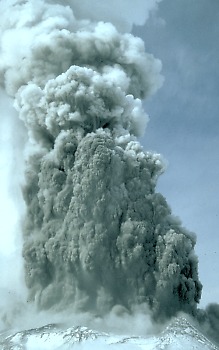 f7
or Mt. Pinatubo of late dramatic vintage, must, “of course,” vent many times more carbon dioxide and other such greenhouse gases into the atmosphere than all man’s activities put together.
f7
or Mt. Pinatubo of late dramatic vintage, must, “of course,” vent many times more carbon dioxide and other such greenhouse gases into the atmosphere than all man’s activities put together.
While observing the monumental spectacle of incredible volcanic eruptions such as these might make that seem obvious, in actuality, however, the reverse is true. It turns out that all “subaerial” (surficial) volcanoes on the planet put together only spew forth some one four-hundredth (!) the rate of present-day anthropogenic CO2 emissions into the Earth’s air.
(Getting into the nitty-gritty of comparative numerology, according to this research report 2 [see also 3], “subaerial” [surficial] volcanoes on Earth annually produce an average of 34 × 1012 grams of carbon dioxide from “passive degassing,” together with 31 × 1012 grams per year resulting from active eruptions, for a total volcanic emission rate of 6.5 × 107 [65 million] metric tons of CO2 per year. That sounds like a lot, but per the indicated piece that amounts to a mere 0.22% of present levels of human-caused emissions of carbon dioxide — which annual anthropogenic contributions may therefore be calculated to lie in the vicinity of 29 or 30 gigatons of CO2.
We may bring forth another value for anthropogenic CO2 emissions, according to this source, to wit: “Fossil fuels account for most of the 6.5 billion tons [gigatons] of carbon — the amount present in 25 gigatons of CO2 — that people around the world vent into the air every year.” 4 Twenty-five gigatons is 2.5 × 1010 metric tons of carbon dioxide released every year as a result of human activities, indicating via this figure that volcanoes produce a mere 0.26% of the CO2 that mankind vents into the Earth’s atmosphere.)
According to either value we see that modern-day anthropogenic activities exhaust into the air something like 400 times as much CO2 as all the surficial volcanoes of the world put together. *
Now can folks begin to get a glimmering as to why, with that vast venting of heat-trapping gases, formerly sequestered for millions of years outside the biotic cycle — which human beings are now spewing into the Earth’s atmosphere for basically the first time in the planet’s existence — responsible scientists looking at this situation conclude that the consequences will eventually pose a grave hazard for our earthly environment?
Humans truly are now affecting the entire planet in toto.
*
While undersea volcanoes also contribute somewhat to total planetary volcanic emissions, that isn’t likely to significantly affect the huge disparity between volcanic and anthropogenic volumes of CO2 emitted, not to speak of the large likelihood that most or all carbon dioxide exhaled by volcanoes into the (deep) oceans, remains dissolved in the oceans.
1 Quinn Schiermeier, “No solar hiding place for greenhouse skeptics,” Nature; Vol. 448, Issue No. 9149 (5 July 2007 [2007-07-05]), pp. 8-9.
2 Stanley N. Williams, Stephen J. Schaefer, Marta Lucia Calvache V., and Dina Lopez, “Global carbon dioxide emission to the atmosphere by volcanoes,” Geochimica et Cosmochimica Acta (Journal of The Geochemical Society and The Meteoritical Society); Vol. 56, Issue No. 4 (April 1992 [1992-04]), pp. 1765-1770.
3 Richard E. Stoiber, “Volcanic Gases From Subaerial Volcanoes on Earth,” Global Earth Physics: A Handbook of Physical Constants, AGU Reference Shelf 1, American Geophysical Union, 1995.
4
Robert F. Service,
“The Carbon Conundrum,”
Science
(journal of the American Association for the Advancement of Science);
Vol. 305, Issue No. 5686 (13 August 2004 [2004-08-13])
(“Toward a Hydrogen Economy”
special issue),
pp. 962-963.
Thanks to the American Association for the Advancement of Science (AAAS) and their journal Science magazine for the symposium on global warming, Qs and AAAs About Global Climate Change, that was held in Washington, D.C., on June 15, 2004 (Earthdate 2004-06-15) — which in addition to providing valuable presentations in their own right (notably not behind Science’s typical high subscription barrier), have proven fruitful as illustrations of basic information on the topic.
f1 Sherwood Rowland (University of California, Irvine), “Earth’s Atmosphere: Greenhouse Gases and Global Warming” (pdf), Slide 02 — Charts thermal ‘blackbody’ radiation emitted by the Sun to the Earth, and in turn radiated away (at a far lower temperature) by the Earth to space. Qs and AAAs About Global Climate Change, hosted by AAAS and its Journal, Science, earthdate 2004-06-15.
f2 Sherwood Rowland (University of California, Irvine), “Earth’s Atmosphere: Greenhouse Gases and Global Warming” (pdf), Slide 05 — Chart illustrating blanketing effect that the greenhouse gases (carbon dioxide, ozone, methane, and water) have on the spectrum of thermal energy radiated away by Earth. Qs and AAAs About Global Climate Change, hosted by AAAS and its Journal, Science, earthdate 2004-06-15.
f3 Thomas Crowley (Duke University), “Global Temperature History: The Last Thousand Years” (pdf), Slide 12 — The Sun, as imaged by SOHO (earthdate 2003-07-03). Qs and AAAs About Global Climate Change, hosted by AAAS and its Journal, Science, earthdate 2004-06-15.
f4 Daniel Schrag (Harvard University), “What Earlier Warm Periods Can Tell Us About the One We’re In” (pdf), Slide 02 — Charts where atmospheric CO2 levels have been for the last 400,000 years, shows where it is now (2004) and will be in 2040-2060. Qs and AAAs About Global Climate Change, hosted by AAAS and its Journal, Science, earthdate 2004-06-15.
f5 Sherwood Rowland (University of California, Irvine), “Earth’s Atmosphere: Greenhouse Gases and Global Warming” (pdf), Slide 04 — Charts monthly mean world carbon dioxide measured at Mauna Loa, Hawaii, between the years 1960 and 2000. Qs and AAAs About Global Climate Change, hosted by AAAS and its Journal, Science, earthdate 2004-06-15.
f6 Daniel Schrag (Harvard University), “What Earlier Warm Periods Can Tell Us About the One We’re In” (pdf), Slide 14 — Charts potential carbon dioxide concentrations from 1990 through 2100 according to various scenarios. Qs and AAAs About Global Climate Change, hosted by AAAS and its Journal, Science, earthdate 2004-06-15.
f7 Phreatic eruption, “Mount St. Helens,” Wikipedia.
f8 Joyce Penner (University of Michigan), “Complexities in the Temperature Signal: Aerosols and Trace Gases” (pdf), Slide 16 — Charts carbon dioxide, sulfate, and temperature record over the last thousand years, and projects temperature increases for the future. Qs and AAAs About Global Climate Change, hosted by AAAS and its Journal, Science, earthdate 2004-06-15.
f9 Richard Alley (Pennsylvania State University), “The History of Abrupt Climate Change” (pdf), Slide 26 — Charts temperature change from 1760, extending into the future to 2100 according to various scenarios. Qs and AAAs About Global Climate Change, hosted by AAAS and its Journal, Science, earthdate 2004-06-15.
f10 David Battisti (University of Washington), “The Synergism Between Ocean and Atmosphere” (pdf), Slide 03 — World map charts anticipated climate change by the end of the 21st century according to two different scenarios (SRES A2 and B2). Qs and AAAs About Global Climate Change, hosted by AAAS and its Journal, Science, earthdate 2004-06-15.
Labels: carbon dioxide, global warming, science
Impearls: 2007-09-23 Archive
Earthdate 2007-09-22
| Autonomy and the trajectories of Rome vs. Athens in history |
|
Volokh Conspiracist Ilya Somin has an interesting post on the question of “How Federal is Star Trek’s Federation?”, which you can read here. (See also my other post deriving from Ilya’s piece, which you can find here, or use up-thread/down-thread controls in the navigation panel above.)
Ilya gets into (and the comments further explore) questions like whether the Federation was socialistic (and during which period), while commenters raise the issue of just how the presence of technological replicators affects — perhaps even eliminates the meaning of — the Federation’s (or perhaps just humanity’s within it) economy.
Going in a completely different direction, however, this time I’d like to explore the applicability and consequences of a statement that Ilya made (in the context of making an analogy between it and the Federation), having to do with the ancient “Athenian Empire,” otherwise known as the Delian League. As Ilya asserted in that piece: “As long as the allies paid their tribute, Athens mostly left them alone and did not try to influence their domestic policies.”
I suggest this wasn’t true. On the contrary, Oxford professor of ancient history G. H. Stevenson wrote a book with the (seemingly boring) title Roman Provincial Administration (which actually was very interesting), in the first chapter of which a striking comparison between the Athenian Empire (aka Delian League) and the Roman Empire (including the Republic) is made. Stevenson writes: 1
At a time when Rome was an obscure Italian city an attempt had been made by Athens, the most brilliant city-state of antiquity, to found an empire in the Aegean, and to extend it as far west as Sicily. No state in history may seem to have been so well qualified as fifth-century Athens to embark on a career of Imperialism. Her efforts had been largely responsible for saving Greece from incorporation in the Persian Empire. She represented the best qualities of the Greek race, and counted among her citizens men of the highest intellectual and military ability.
But her attempt to found an empire was unsuccessful. Though no one cause can be given for her failure, it must in the main be attributed to the fact that she was merely one city state among others. So long as each Greek city was content with nothing less than complete autonomy no political union which aspired at creating more than a system of alliances was possible. The cause of the failure of Athens was not so much that she was a democracy, as Cleon said in the speech attributed to him by Thucydides, as that she was a city state. Oligarchical Sparta was even less successful than democratic Athens in uniting the Greeks under her leadership.
Athens and Sparta alike were unable to refrain from an interference in the internal affairs of Greek states which even the smallest of them bitterly resented. Athens favoured the democratic parties against the oligarchs, and sometimes even imposed a democratic constitution on her so-called “allies.” She deprived the local courts of much of their power, and insisted that important cases should be tried at Athens. Finally, the tribute, which at first had been willingly paid as a contribution to the defence of Greece against Persia, came to be regarded as an imposition when peace was made with Persia and the revenues of the League were expended on the beautification of the Acropolis or on a war with Sparta with which many of the allies felt that they had little concern.
As a result, Athens’ empire possessed little inherent cohesion and staying power, and when push came to shove, it simply fell apart.
Contrast that (as Stevenson does) with the Roman experience, where first under the Republic the Italian allied cities of Rome were granted full membership together with autonomy within the Roman State. (Those Italian “allies” actually went to war against Rome — in the so-called “Social War” of 90-89 b.c. — in order to obtain, not their independence, but to force Rome to admit them into the Roman State! And they won, or rather lost, whereupon the Republic did ultimately admit them, as autonomous cities, into full-fledged inclusion within Rome.)
During the Empire, this autonomy principle was extended further across the whole empire (without necessarily including Roman citizenship — rather, each city-state possessed its own citizenship), to such an extent that Edward Togo Salmon (Professor of History at McMaster University) could write, in Encyclopædia Britannica’s article “Rome, Ancient”: 2
In the empire at large, Flavians and Antonines, like the better Julio-Claudians, aimed at stability in order that its inhabitants might live in security and self-respect. In this they largely succeeded. Gibbon’s famous description of the 2nd century as the period when men were happiest and most prosperous is not entirely false. […]
The empire was a vast congeries of peoples and races with differing religions, customs, and languages, and the emperors were content to let them live their own lives. Imperial policy favoured a veneer of common culture transcending ethnic differences, but there was no deliberate denationalization. Ambitious men striving for a career naturally found it helpful, if not necessary, to become Roman in bearing and conduct and perhaps even in language as well (although speakers of Greek often rose to exalted positions). But local self-government was the general rule, and neither Latin nor Roman ways were imposed on the communities composing the empire. […]
Where possible, the emperors kept direct administration from Rome to a minimum (except perhaps in Egypt), and the 2nd century was the most flourishing period of urban civilization that the empire ever knew. […] It is impossible not to be impressed by the spectacle of the Roman Empire in its 2nd-century heyday, with its panorama of splendid and autonomous communities.
Thus we see an origin, perhaps, for the radically differing trajectories of Rome and Athens in history.
1 G. H. Stevenson (Fellow and Praelector in Ancient History, University College, Oxford), Roman Provincial Administration, G. E. Stechert & Co., New York, 1939; pp. 4-5.
2 Edward Togo Salmon (d. 1988; Messecar Professor of History, McMaster University, Hamilton, Ontario, 1954-73; author of A History of the Roman World from 30 b.c. to a.d. 138), “Rome, Ancient,” Section IV: The early Roman Empire (31 b.c.-a.d. 193), Encyclopædia Britannica, 15th Edition, 1974, Encyclopaedia Britannica, Inc., Chicago; Macropædia Vol. 15, pp. 1116-1117.
Labels: ancient Athens, ancient history, ancient Rome
Impearls: 2007-09-23 Archive
Earthdate 2007-09-21
| Replicators in a robust capitalist economy |
|
Volokh Conspiracist Ilya Somin has an interesting post on the question of “How Federal is Star Trek’s Federation?”, which you can read here. (See also my other post deriving from Ilya’s piece, which you can find here, or use up-thread/down-thread controls in the navigation panel above.)
Ilya gets into (and the comments further explore) questions like whether the Federation was socialistic (and during which period), while commenters raise the issue of just how the presence of technological replicators affects — perhaps even eliminates the meaning of — the Federation’s (or perhaps just humanity’s within it) economy.
I certainly agree with those in the thread who maintain that the mere advent of replicators per se isn’t going to eliminate economics nor an economy. In this regard, I was surprised no one (but me) recalled perhaps the granddaddy (SF) story concerning replicators’ possible effects on a vigorous capitalist economy — to wit, Ralph Williams’ (pseudonym of Ralph W. Stone) “Business As Usual, During Alterations,” from the grand old days (1958) of John W. Campbell, Jr.’s Astounding Science Fiction — which delves into many of the issues considered here.
In the story an alien interstellar society decides to bring down human civilization (then at a more or less mid 20th century stage of development) — quietly, without much of a fuss, so they can simply take over — by providing humanity with several instances of a functional replicator device, capable of replicating most anything (’cepting your baby or pet), including notably the devices themselves. In addition to brief instructions on their use, an inscription provides fair… “Warning! A push of the button grants your heart’s desire. It is also a chip at the foundations of human society. A few billion such chips will bring it crashing down. The choice is yours.”
So, naturally, as anybody would expect, the carefree capitalist society of the West (along with the rest of the world) immediately snatches up the new technology, oblivious to all warning (and all doomsayers), replicating everything in sight. But — funny thing — at least in the story, Western capitalist society and its economy doesn’t collapse. Oh, it goes through major changes, the basis of the economy turning on its head in only about a day, but it survives and thrives.
As the tale goes, from within the midst of the upheaval: 1
“Well, I’ve been thinking about it, he’s right, you know, not very many people will buy beans and chuck roast, when they can eat wild rice and smoked pheasant breast. So, you know what I’ve been thinking? I think what we’ll have to have, instead of a supermarket, is a sort of super-delicatessen. Just one item each of every fancy food from all over the world, thousands and thousands, all different—”
“It won’t work,” George said with weary kindness. “That’s what I’ve just been explaining to John here. Why should I buy my pickled hummingbird tongues from you, when I can keep a can on my own shelf and duplicate it ad nauseam?”
“Ad nauseam, that’s why,” Simond said earnestly. “Beans, you can eat every day. Pickled hummingbird tongues, you can’t. You know, when we first started selling these frozen TV dinners, we ran into something funny. The first couple of weeks, they’d go like crazy. Then they’d die. We’d change suppliers, same story. Hot, then cold. Finally, somebody got an idea. You take the Mexican dinner, that’s a good seller, I like it myself. You taste the first one, it’s delicious. The next, not quite so good. The third or fourth one, eating’s a chore, and by the tenth you can’t stand the sight of even the wrapper—”
“C rations,” I put in.
“That’s it, same thing. The trouble is, each one is as exactly like the other as they can be made. You eat one, you’ve had them all. So, we passed the word to our supplier. Now, he changes the formula every week, a little more pepper, a few less beans, a different cut of meat, so forth. People think they are getting the same thing, but it’s just enough different to keep them coming back for more.”
“I see what you mean,” I said thoughtfully. “In the past, we’ve sold standardization because it was a scarce commodity. Now, the shoe is on the other foot, we’ll sell diversity. Instead of offering the customer as choice of GE or Westinghouse refrigerator, we’ll offer a choice of any refrigerator built, anywhere—” a sudden thought struck me. “Damn it,” I said unhappily. “We still can’t get away from suppliers.”
“Not only that,” George offered helpfully. “Those samples you’re going to offer a choice of are practically all going to be hand-made models, remember that. Also, you’re not going to get away with duplicating them for nothing. I think you already broke the law when you duplicated the trademarks on those cartons. Even if you didn’t, it’s not going to take much extension of present legislation to make it illegal to copy any manufactured article without paying royalty.”
Not bad foresight from half a century ago into the stage we’re at now, I’d say, as a result of the advent of “replicators” in the computer software, game and media industries, not to speak of such things as automobiles that one can now have built incorporating a wide variety of individually tailored options.
Also, as longtime readers of Impearls are aware, farsighted physicist Freeman Dyson wrote a terrific piece concerning the likely impact of replicators (of a kind, both mechanical and biological) in his fascinating essay
“The World, The Flesh, and The Devil,”
which very much rewards perusing in its own right.
UPDATE: 2007-10-07 12:00 UT: A reader on another thread points to this site (scroll down to “The Duplicators” and “replicator”), which does mention Ralph Williams’ story. However, they then get it fundamentally wrong (kind of like Microsoft vis-a-vis the UNIX filesystem), missing one of the major lessons of “Business As Usual, During Alterations.”
As the site asserts: “Lacking that” (i.e., “some substance that cannot be replicated”) “there is no way to prevent either currency or cheques from being counterfeited. Counterfeits so good they cannot be distinguished from genuine money.”
This is incorrect, as Williams insightfully realizes.
On the contrary, while currency as such immediately becomes valueless with the advent of high-quality replicators, cheques (and charge cards) do not.
As the author points out, one can already (pre-replicators) write just as many bad cheques as one wants, and still end up in prison over it — that won’t change with replicators.
Thus, in his story the entire economy flips over instantaneously to consist solely of cheques, credit card and like transactions — no cash.
1 Ralph Williams (pseudonym of Ralph W. Stone), “Business As Usual, During Alterations,” originally published in John W. Campbell, Jr.’s (editor) Astounding Science Fiction, July 1958 [1958-07]. Reprinted in Prologue to Analog, edited by John W. Campbell, 1962, Doubleday & Company, Inc., Garden City, New York; pp. 230-258.
Labels: economics, replicator, science fiction
Impearls: 2007-09-23 Archive
Earthdate 2007-09-11
| America’s strong arm, wielding the Sword of Iraq, slays the multi-headed Hydra of Al Qaeda |
|
On-site blogger Michael Totten’s recent piece concerning his visit to Ramadi — capital of Anbar Province in Iraq and formerly capital of Al Qaeda’s self-declared “Islamic State of Iraq” — describes the great convulsion that occurred earlier this year in that city which finally turned the people of that locale and region firmly against Al Qaeda in Iraq:
“Al Qaeda said they would mess him up if he got in their way. He called their bluff and they seriously fucked him up. They launched a massive attack on his area. All hell broke loose. They set houses on fire. They dragged people through the streets behind pickup trucks. A kid from his area went into town and Al Qaeda kidnapped him, tortured him, and delivered his head to the outpost in a box. The dead kid was only sixteen years old.” […]
“One night,” Lieutenant Markham said, “after several young people were beheaded by Al Qaeda, the mosques in the city went crazy. The imams screamed jihad from the loudspeakers. We went to the roof of the outpost and braced for a major assault. Our interpreter joined us. Hold on, he said. They aren’t screaming jihad against us. They are screaming jihad against the insurgents.”
“A massive anti-Al Qaeda convulsion ripped through the city,” said Captain McGee. “The locals rose up and began killing the terrorists on their own. They reached the tipping point where they just could not take any more. They told us where the weapon caches were. They pointed out IEDs under the road.”
“In mid-March,” Lieutenant Hightower said, “a sniper operating out of a house was shooting Americans and Iraqis. Civilians broke into his house, beat the hell out of him, and turned him over to us.” […]
“One day,” Lieutenant Hightower said, “some Al Qaeda guys on a bike showed up and asked where they could plant an IED against Americans. They asked a random civilian because they just assumed the city was still friendly to them. They had no idea what was happening. The random civilian held him at gunpoint and called us to come get him.”
“People here tacitly supported Al Qaeda,” Captain McGee said, “because Al Qaeda was attacking us. But they took control of the city. They forced girls to stay home from school. They dragged people outside the city and shot them in the head. They broke people’s fingers if they were seen smoking a cigarette. They forced men to grow beards. Once they started acting like that they could only establish a safe haven by using terrorism against the local civilians.”
“Al Qaeda struck out three times,” said Major Peters. “Strike One: They killed a Sheikh and held his body for four days. Strike Two: They executed young people in public. Strike Three: They attacked the compound of another sheikh. The people here said enough. They aligned with us because they realized Al Qaeda was the real enemy. They didn’t like Al Qaeda’s version of Islam at all.”
Read the whole thing.
Emblematic of this convulsive wholesale turning away by the people of Ramadi and Anbar Province from Al Qaeda, and their strange new alliance with the United States, Totten presents us with the above affecting drawing by an Iraqi child of Ramadi — an image of the strong arm of America symbolically wielding the Sword of Iraq to slay the evil, multi-headed Hydra of Al Qaeda….
Not a bad image with which to commemorate September 11th, and the immolation alive of 3,000 innocent folk by that same organization of Al Qaeda six years ago.
| (Blank last screen) |
|
2002-11-03 2002-11-10 2002-11-17 2002-11-24 2002-12-01 2002-12-08 2002-12-15 2002-12-22 2002-12-29 2003-01-05 2003-01-12 2003-01-19 2003-01-26 2003-02-02 2003-02-16 2003-04-20 2003-04-27 2003-05-04 2003-05-11 2003-06-01 2003-06-15 2003-06-22 2003-06-29 2003-07-13 2003-07-20 2003-08-03 2003-08-10 2003-08-24 2003-08-31 2003-09-07 2003-09-28 2003-10-05 2003-10-26 2003-11-02 2003-11-16 2003-11-23 2003-11-30 2003-12-07 2003-12-14 2003-12-21 2003-12-28 2004-01-04 2004-01-11 2004-01-25 2004-02-01 2004-02-08 2004-02-29 2004-03-07 2004-03-14 2004-03-21 2004-03-28 2004-04-04 2004-04-11 2004-04-18 2004-04-25 2004-05-02 2004-05-16 2004-05-23 2004-05-30 2004-06-06 2004-06-13 2004-06-20 2004-07-11 2004-07-18 2004-07-25 2004-08-22 2004-09-05 2004-10-10 2005-06-12 2005-06-19 2005-06-26 2005-07-03 2005-07-10 2005-07-24 2005-08-07 2005-08-21 2005-08-28 2005-09-04 2005-09-11 2005-09-18 2005-10-02 2005-10-09 2005-10-16 2005-10-30 2005-11-06 2005-11-27 2006-04-02 2006-04-09 2006-07-02 2006-07-23 2006-07-30 2007-01-21 2007-02-04 2007-04-22 2007-05-13 2007-06-17 2007-09-09 2007-09-16 2007-09-23 2007-10-07 2007-10-21 2007-11-04 2009-06-28 2009-07-19 2009-08-23 2009-09-06 2009-09-20 2009-12-13 2011-03-27 2012-01-01 2012-02-05 2012-02-12



